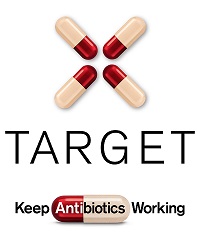Leaflets to discuss with patients
 Using patient
leaflets interactively in consultations is the best way to support effective discussions and maintain patient satisfaction.
Using patient
leaflets interactively in consultations is the best way to support effective discussions and maintain patient satisfaction.
Version 1.0, November 2021.
UTI Leaflet - Older Adults
UTI Leaflet - Older Adults HTML

Contents
- What is a urine infection?
- What signs and symptoms should you look out for?
- Consider other things that may also cause confusion
- Always consider COVID-19
- When should you get help?
- What can you do to help feel better?
- What might your pharmacist / nurse / doctor do?
- Advice about antibiotics
- About this leaflet
What is a urine infection?
A urine infection occurs when bacteria in any part of the urine system cause symptoms.
If a urine test finds bacteria but you are otherwise well, do not worry, this is common, and antibiotics are not usually needed. However, severe urine infections can be life threatening.

a. Kidneys make urine
b. Bladder stores urine
c. Urethra takes urine out of the body
What can you do to help prevent a urine infection?
Are you drinking enough? Look at the colour of your urine.

- Drink enough fluid (6-8 glasses) so that you pass pale coloured urine regularly during the day, and to avoid feeling thirsty, especially during hot weather
- Avoid drinking too many fizzy drinks or alcohol
- There is no proven benefit of cranberry products or cystitis sachets
- Prevent constipation; ask for advice if needed
- Maintain good control of diabetes
Stop bacteria spreading from your bowel into your bladder
- Wipe genitals from front to back after using the toilet
- Change pads and clean genitals if soiled
- Keep the genital area clean and dry; avoid scented soaps
- Wash genital area with water before and after sex
Speak to your pharmacist about referral to a GP or other treatments.
What signs and symptoms should you look out for?
Consider these symptoms if you have a urinary catheter
- Shivering or shaking
- High or low temperature
- Kidney pain in your back just under the ribs
New or worsening signs of urine infection in all people
- Pain or burning when passing urine
- High or low temperature (also a sign of COVID-19 – see below)
- Shivering or shaking
- Urgency (feeling the need to urinate immediately)
- Pain in your lower tummy above pubic area
- Incontinence (wetting yourself more often than usual)
- Passing urine more often than usual
- Cloudy urine, or visible blood in your urine
- Confusion, change in behaviour, or unsteadiness on feet
Consider other things that may also cause confusion
- Pain
- Constipation
- Poor sleep
- Low mood
- Not drinking enough
- Side effects of medicine
- Other infection
- Change in your routine or home environment
- Poor diet
COVID-19 specific advice
If you think you may have COVID-19 then please visit GOV.UK's coronavirus section and the NHS for the latest guidance and information.
Speak to NHS111, a pharmacist or your GP if you are worried about COVID-19.
When should you get help?
The following symptoms are possible signs of serious infection and should be assessed urgently. Contact your GP Practice or contact NHS 111 (England), NHS 24 (Scotland dial 111), NHS direct (Wales dial 0845 4647), or GP practice (NI).
- Shivering, chills and muscle pain
- Not passing urine all day
- Trouble breathing
- Visible blood in your urine
- Feeling very confused, drowsy or slurred speech
- Temperature is above 38ºC* or less than 36ºC
- Kidney pain in your back just under the ribs
- Very cold skin
Symptoms are getting a lot worse, or not starting to improve within 2 days of starting antibiotics.
Trust your instincts, ask for advice if you are not sure how urgent the symptoms are.
What can you do to help feel better?
- Drink enough fluid so that you pass urine regularly during the day, especially during hot weather
- Take paracetamol regularly, up to 4 times daily to relieve fever and pain
- There is no proven benefit of cranberry products or cystitis sachets
- If you’re worried about wetting yourself, see your doctor or nurse for advice
- Ask for advice from your pharmacist/carer
- Drink enough fluids to avoid feeling thirsty and to keep your urine pale
What might your pharmacist / nurse / doctor do?
- If your symptoms are likely to get better on their own you may receive self-care advice and pain relief
- Ask you to drink more fluids
- Ask you for a urine sample
- You may be given an antibiotic that you can use if your symptoms don’t improve or you start to feel worse
Advice about antibiotics
- Antibiotics can be life saving for serious urine infections, but antibiotics are not always needed for all urinary symptoms
- Antibiotics may make the bacteria in your bowel resistant to antibiotics making UTIs difficult to treat in the future
- Common side effects of taking antibiotics include thrush, rashes, vomiting and diarrhoea; ask for advice if you are worried
- Keep antibiotics working, only take them when your healthcare professional advises them
About this leaflet
TARGET is operated by the UK Health Security Agency. Developed in collaboration with professional medical bodies.
Version: 2.4
Published: October 2018
Review date: June 2021.